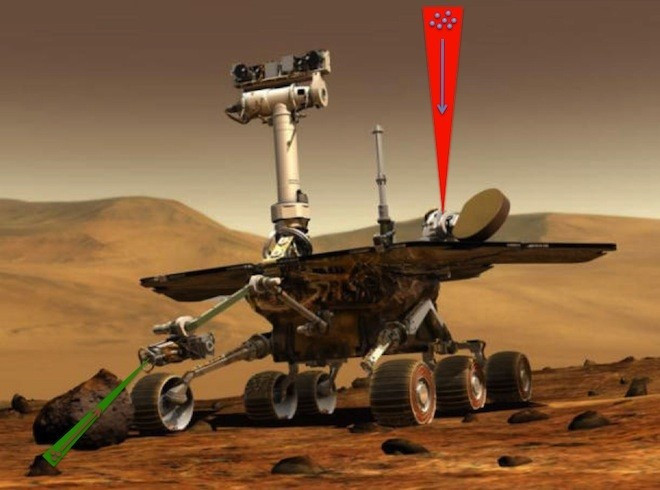Nasa Funds Research Into Star Trek Laser Beams

NASA has begun funding research into "tractor beams" in order to gather samples for analysis in future missions.
US scientists have been given $100,000 (£63,000) to examine how lasers could be used by both space crafts and robotic vehicles to explore a planet's surface.
The research will look into three laser-based approaches. It is thought that the tractor beams will be 'drag' and move particles the size of a living cell, but nothing bigger.
"Though a mainstay in science fiction, and Star Trek in particular, laser-based trapping isn't fanciful or beyond current technological know-how," said Dr Paul Stysley of the Goddard Space Flight Centre.
The team are looking into three possible methods to capture and gather sample materials such as particles, as well as single molecules, viruses, ribonucleic acid, and fully functioning cells in future space missions.
One is an adaptation of an effect called "optical tweezers" where objects can be trapped in the focus of one or two laser beams. However, for this method to work, an atmosphere is needed and may not be suited for more distant explorations.
A second technique uses solenoid beams, intense lasers that create an electromagnetic effect to drag in an object, which can be used in a space vacuum, unlike the optical tweezers.
The third technique has never been tested in a lab but is based on a Bessel beam, a laser that creates ripples which could coax a sample in, similar to the effect of a stone being thrown into a pond.
While all three cases only have a small effect, but in some cases could outperform existing methods of sample collecting.
"[Current] techniques have proven to be largely successful, but they are limited by high costs and limited range and sample rate," said Dr Stysley.
"An optical-trapping system, on the other hand, could grab desired molecules from the upper atmosphere on an orbiting spacecraft or trap them from the ground or lower atmosphere from a lander.
"In other words, they could continuously and remotely capture particles over a longer period of time, which would enhance science goals and reduce mission risk."
© Copyright IBTimes 2025. All rights reserved.





















